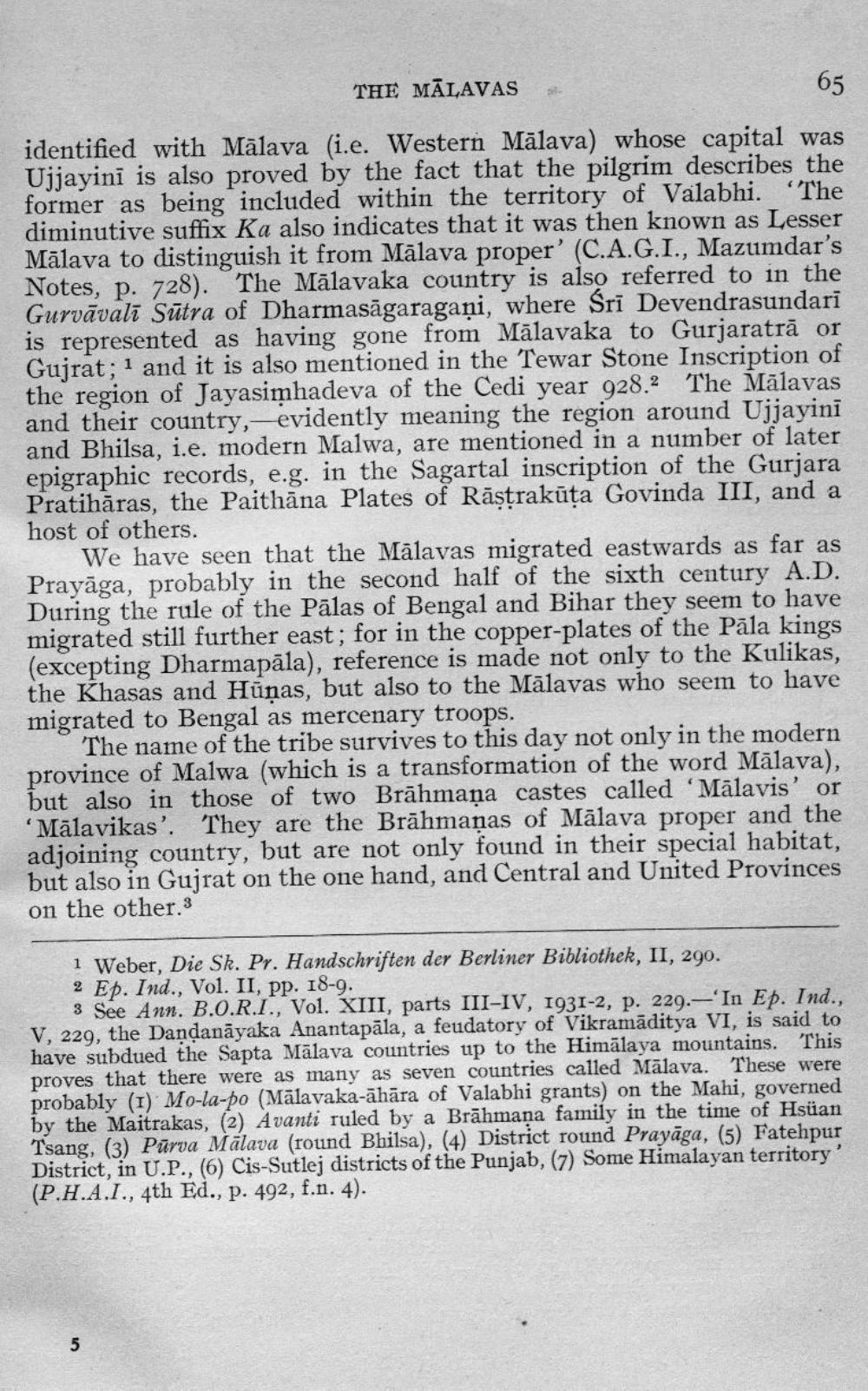________________
THE MALAVAS
65
identified with Malava (i.e. Western Mälava) whose capital was Ujjayini is also proved by the fact that the pilgrim describes the former as being included within the territory of Valabhi. "The diminutive suffix Ka also indicates that it was then known as Lesser Malava to distinguish it from Malava proper' (C.A.G.I., Mazumdar's Notes, p. 728). The Malavaka country is also referred to in the Gurvavali Sutra of Dharmasagaragani, where Śrī Devendrasundari is represented as having gone from Malavaka to Gurjaratrā or Gujrat; and it is also mentioned in the Tewar Stone Inscription of the region of Jayasimhadeva of the Cedi year 928.2 The Malavas and their country, evidently meaning the region around Ujjayini and Bhilsa, i.e. modern Malwa, are mentioned in a number of later epigraphic records, e.g. in the Sagartal inscription of the Gurjara Pratihāras, the Paithana Plates of Räṣṭrakuṭa Govinda III, and a host of others.
27
We have seen that the Malavas migrated eastwards as far as Prayaga, probably in the second half of the sixth century A.D. During the rule of the Palas of Bengal and Bihar they seem to have migrated still further east; for in the copper-plates of the Pāla kings (excepting Dharmapala), reference is made not only to the Kulikas, the Khasas and Hūnas, but also to the Malavas who seem to have migrated to Bengal as mercenary troops.
The name of the tribe survives to this day not only in the modern province of Malwa (which is a transformation of the word Malava), but also in those of two Brahmana castes called 'Malavis' or 'Malavikas'. They are the Brāhmaṇas of Malava proper and the adjoining country, but are not only found in their special habitat, but also in Gujrat on the one hand, and Central and United Provinces on the other.3
1 Weber, Die Sk. Pr. Handschriften der Berliner Bibliothek, II, 290. 2 Ep. Ind., Vol. II, pp. 18-9.
8 See Ann. B.O.R.I., Vol. XIII, parts III-IV, 1931-2, p. 229.-'In Ep. Ind., V, 229, the Dandanayaka Anantapala, a feudatory of Vikramaditya VI, is said to have subdued the Sapta Mälava countries up to the Himalaya mountains. This proves that there were as many as seven countries called Mälava. These were probably (1) Mo-la-po (Malavaka-āhāra of Valabhi grants) on the Mahi, governed by the Maitrakas, (2) Avanti ruled by a Brahmana family in the time of Hsüan Tsang, (3) Purva Malava (round Bhilsa), (4) District round Prayaga, (5) Fatehpur District, in U.P., (6) Cis-Sutlej districts of the Punjab, (7) Some Himalayan territory' (P.H.A.I., 4th Ed., p. 492, f.n. 4).
5




